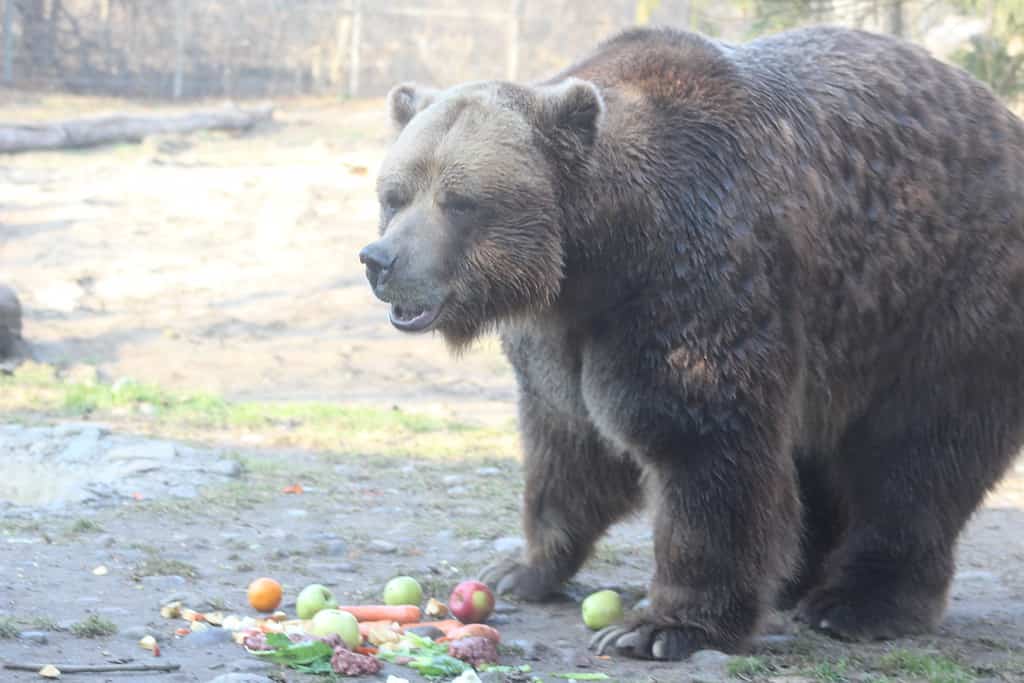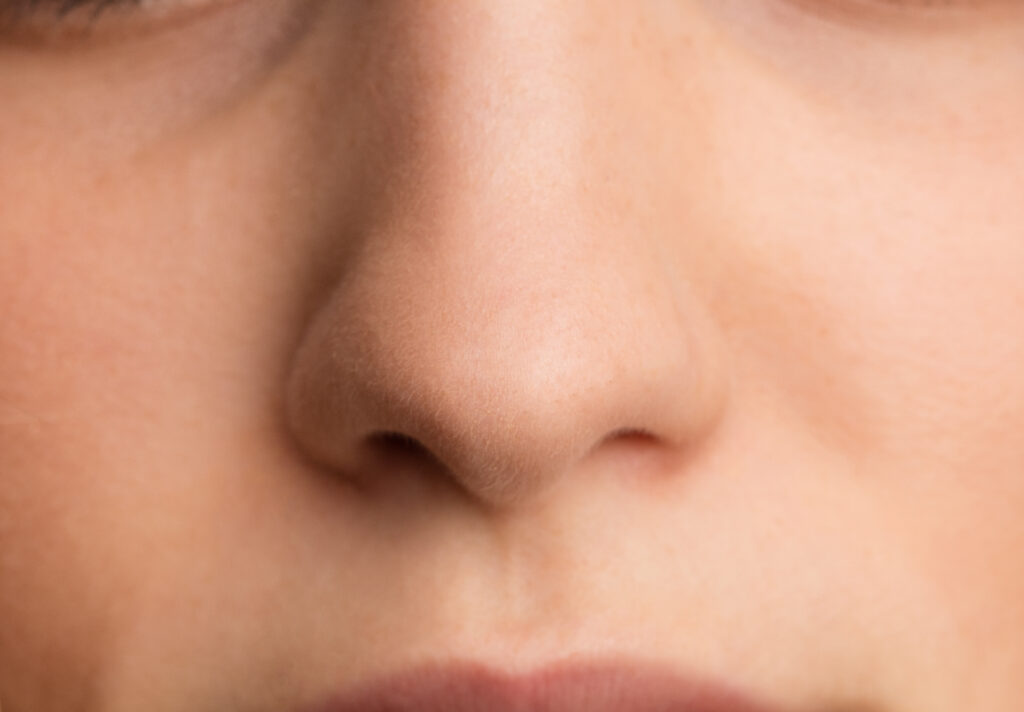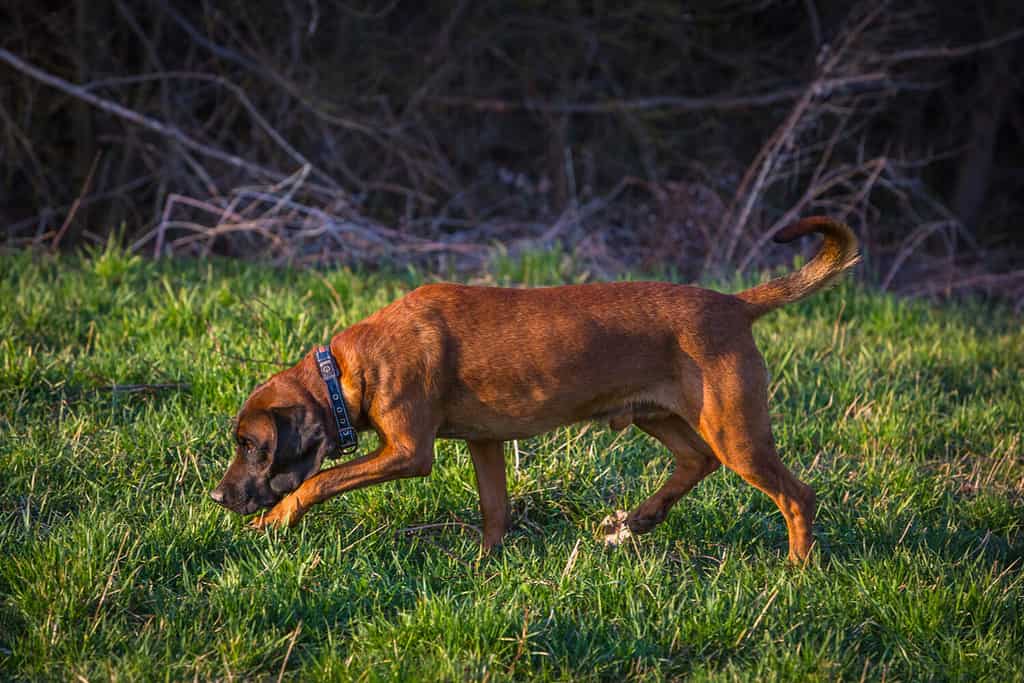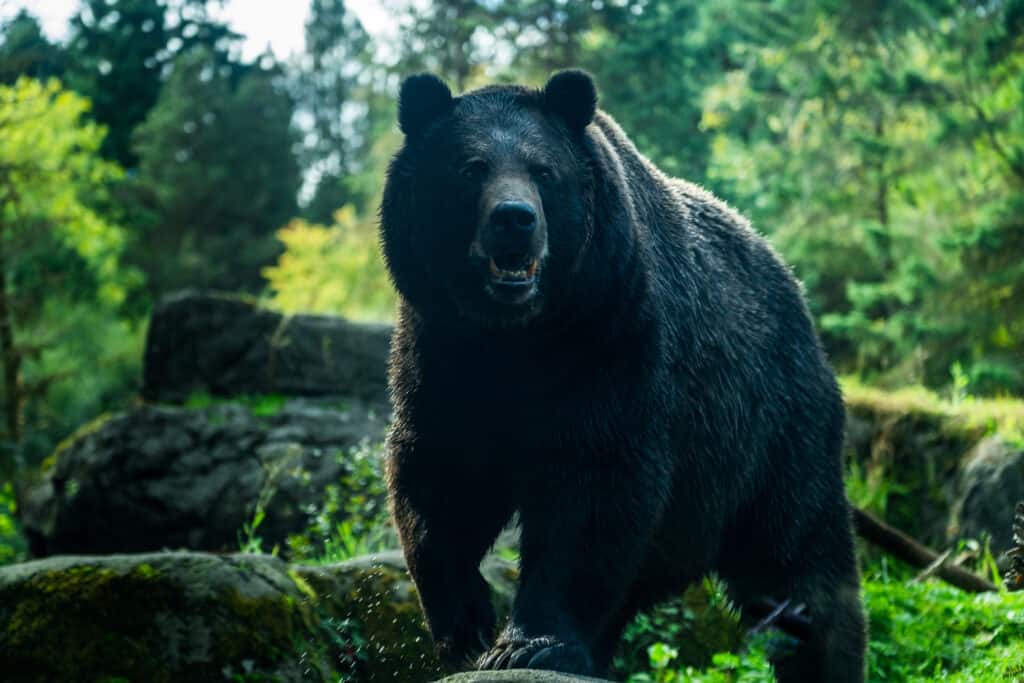There’s an old saying among First Nations peoples that a bear can smell a pine needle falling in the forest. For these quarter-to-half-ton lumbering creatures, that’s a very precise instrument sitting at the tip of their muzzle. Let’s answer the question: just how far can a bear smell, really?

This is a photo of a sturdy
grizzly bear
. This one is probably smelling the vegetables and sweet fruits in the ground in front of him.
©mynewturtle/iStock via Getty Images
How Far Can a Bear Smell? At Least a Good Country Mile | The Amazing Ursine Sense of Smell
In most locations, all bears can easily pick up smells from a statute mile away. Mating seasons, how hungry the bear is, and geography and wind conditions all affect their nasal GPS. But credible sources say a polar bear can track a seal from 40 miles away. Additionally, black bears have tracked wildlife remains from three miles away, and grizzlies can easily match that. 18-to-20-mile olfactory journeys for all bears are not unheard of.

A bear’s sense of smell is literally miles ahead of a human’s.
©Asier Romero/Shutterstock.com
Human Sense of Smell vs. Bear’s
Like humans, bears have an olfactory bulb in their brains. This organ helps both humans and bears identify and remember what things smell like. But for bears, this is an ultra-high-wattage bulb, so to speak. It’s up to five times larger than a human’s.
And that’s not all. Though it’s folded up like a parachute inside their muzzle, the membrane in their nose is up to 100 times bigger than ours. Polar bears even have a fine filigree of nasal bones, making more space for this membrane and giving them maximum sniffing power. Every bear has a nose that is much stronger and sharper than a human’s. They’ll smell you before you smell them.
Bears Can Detect Scents at Least a Few Miles Away
Both the National Parks Service and the North American Bear Center claim that a polar bear can smell a seal from forty miles away. A black bear once tracked down deer remains at three miles. These same black bears can zero in on food within a mile in almost any condition. Many sources claim black bears can pick up scents from 18 to 20 miles away. One Canadian explorer says two miles is an average meal prep for a grizzly to find dead wildlife or leftovers from human visitors.

A
bloodhound
has a legendary ability to track scents, but a bear has them beat paws down.
©msgrafixx/Shutterstock.com
Facing Off for a Literal Smell Test: Dog vs. Bear
The bloodhound has long been employed to find missing people or escaped criminals. But bears are even better sniffers than them. A bear can find and follow smells even further than these rescue pooches. Both bears and dogs are part of the same biological order: Carnivora and all animals in this group have superior snouts. (Even skunks!) Estimates differ, but bears have a sense of smell many times stronger than the legendary nose of the bloodhound. If ranking by size, a bear’s internal nose membrane is four times the size of a dog’s.
A bear’s sense of smell is about seven times stronger than a bloodhound.
Windspeed and Other Things that Affect Scent Tracking
A good breeze is important for bears to pick up and follow a scent.
As mentioned earlier in this post, a polar bear can sniff out a seal up to forty miles away. Forty miles! These arctic giants can also apparently smell a seal through three feet of snow.
This, however, demonstrates how much surroundings and weather affect just how precise the bear’s smell power is. A polar bear in Alaska’s vast, dry, wind-whipped tundra gets a much clearer signal out there in the open. A mountain-dwelling grizzly bear roaming among the Northern California pines has lots more mountains, trees, and vegetation for the air currents to ping off of. That, in addition to plenty more animals and people hiking or touring the many national parks there.
The home field conditions matter when it comes to just how good their sense of smell will be. But it’s still powerful.

In the hilly green of a temperate climate, the abundant life, vegetation, and development can affect how far a bear will smell things.
©elena_prosvirova/Shutterstock.com
Safety, Menus, Dating Apps — What Are Bears Smelling?
Bears smell a lot of things. Their nasal GPS is much more vital to survival than a human’s nose. They can smell food quite well. One report by car enthusiasts stated that bears prefer minivans to other cars because the interior is so embedded with the scent of food.
But bears also are trying to find a mate. That breeding instinct is one reason why they grind their backs up against the tree. It’s not an itch, per se. Males are trying to present their scent; they’re available. And, as might be expected, it’s mostly just the male bears who do this.
While bears don’t have many predators, a wounded bear or a bear cub could be snatched off by a mature fox, wolf, or other Carnivora. Smells can tell a bear who’s nearby or who has been nearby.
What If a Person Smells a Bear?
The smell of bears is hard to nail down. Hunters say black bears smell like wet dogs. Not too many people can safely get near living bears in the wild, so it’s hard to tell. Experts in the field note that surroundings play a role: black and brown bears in the deep forest will be a lot muskier than a polar bear up in the barren tundra. What is known for sure is that because of their superior smelling ability, they will smell the human before the human smells them.
This article about Yellowstone bear attacks has some good bear safety tips.
What the Nose Knows
The bear’s sense of smell is considered the best in the animal kingdom. With their physically large smelling muscles and organs, plus their surprising memory, they certainly pass the smell test!
Thank you for reading! Have some feedback for us? Contact the AZ Animals editorial team.








